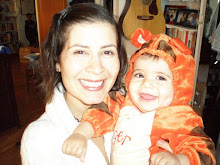
I watched the inauguration yesterday and shared the renewed sense of hope so many of us felt, and was also reminded that we have a long way to go to repair our country domestically, and our standing internationally. Barack Obama has already generated a lot of good will abroad and thanks to his election, we are well-poised to regain a favorable position in world politics.
During his campaign Obama recognized the importance of children learning second languages as a way of bringing our world closer and making our children more competitive in the global marketplace. Then there is the "global humanplace" which is equally important. Obama himself was raised in several countries and exposed to at least three languages growing up. Below is an excerpt from one of his campaign speeches:
"We should have every child speaking more than one language." It's embarrassing when Europeans come over here, they all speak English, they speak French, they speak German. And then we go over to Europe and all we can say is 'merci beaucoup.' A foreign language is a powerful tool to becoming more employable in the global economy ... and children learn languages easier than adults.
– Barack Obama
In many countries outside the U.S. kids are learning several languages as a matter of course at an early age. While our school system does not introduce a second language until middle school, there are many things we can do to give our children the advantages of two or even three languages at an early age. Playing music, reading books and watching DVDs in other languages are all part of making another language and easy and enjoyable part of our children's brain food. Visit www.littlepim.com/for-parents/helpful-teaching-tips for tips on making language learning fun for your children.

